3 Tips for Using a Spa Booking System to Keep Clients Happy
For your clients, your spa business is a place for relaxation. Calming scents and soothing music coalesce with the comfort of a warm, fuzzy robe. Exotic oils smooth the path to tranquility. Aches and pains are eradicated, if only temporarily.

“I can has spa?” said the good boy
Of course, this is all assuming things behind the scenes are operating as they should. One mishandled appointment can ruin an experience and prevent guests from ever returning to your spa.
This is why spa booking software is such a critical tool for businesses: Booking software automates the appointment scheduling process. The greatest benefit of a booking platform is the elimination of human error—no more forgotten bookings that could dismantle a whole day’s schedule.
We surveyed consumers to find out their preferences when it comes to booking and paying for spa appointments. Then, we analyzed the results and compiled the following advice to help with your spa software decisions and optimize your spa experience.
Keep these three tips in mind:
1. Offering Online Booking Is a Must
2. Give Guests the Option to Choose Their Own Therapist
3. Don’t Let Online Payment Strategy Detract From the Guest’s Experience
1. Offering Online Booking Is a Must
Spa booking software provides some undeniable operational benefits, and one of the most important among them is online booking capabilities.
Not only does this feature automate calendar management, but our survey data shows that guests really want to book appointments through a spa’s website.
Guest’s Platform Preferences for Booking Spa Appointments
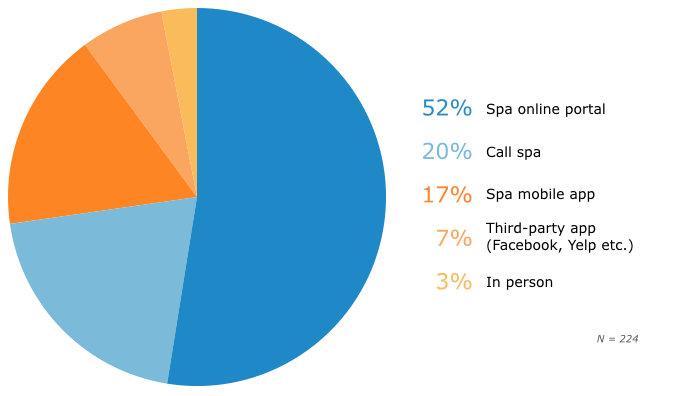
In fact, only 23 percent of spa guests we surveyed say they prefer traditional booking methods such as calling the spa or making an appointment in person. It’s clear; the spa booking realm is firmly in the digital space.
However, our survey data also reveals that spa businesses may be lagging when it comes to digital booking adoption. A majority of spa guests surveyed used traditional methods to book their most recent appointment.
Platform Used to Book Most Recent Spa Visit
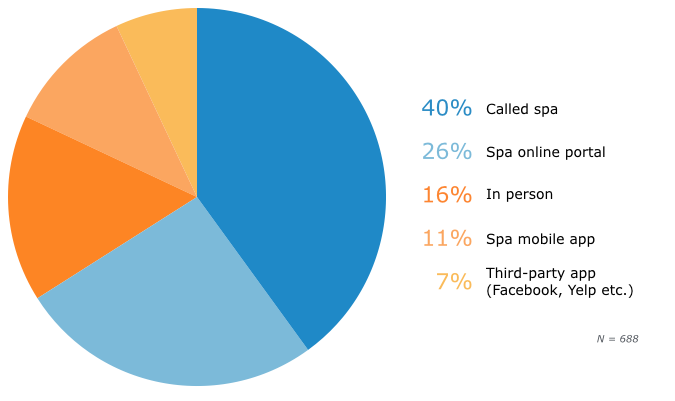
Can you see the disconnect here? Only 44 percent of spa guests used digital platforms to book their most recent appointment, even though 76 percent say they prefer those methods.
What does this mean? There’s a good chance that many of the spas our survey takers patronize aren’t offering digital booking options, forcing guests to call or book in person.
Businesses that don’t offer these capabilities will need to adapt, or they risk providing subpar experiences and failing to satisfy their guest’s expectations.
2. Give Guests the Option to Choose Their Own Therapist
There are many factors to keep in mind when selecting software; cost, complexity and vendor customer service should be top of mind. However, it’s also crucial to make sure your new system enables you to give your customers what they want.
Our consumer research uncovered one crucial capability guests want in an online booking platform: the ability to choose a specific therapist when booking.
Guest Likelihood of Selecting Specific Staff Members for Therapy
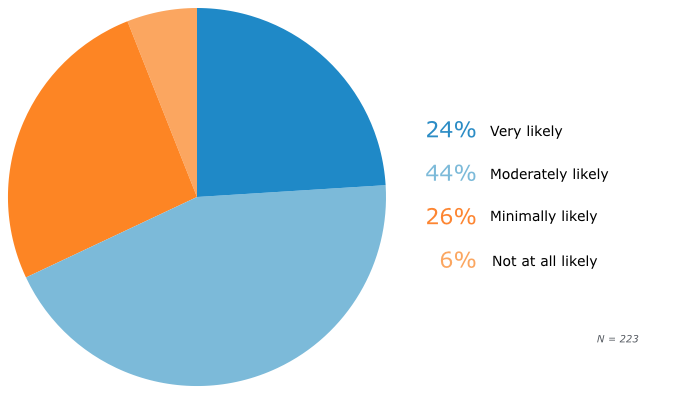
Over two-thirds of guests (68 percent) say they are moderately or very likely to choose a particular staff member for their appointments when booking online.
Specifying a specific therapist for an appointment using traditional methods might seem easy enough. But without an automated calendar, the front desk must constantly coordinate with therapists to keep availability up to date.
Moving to an automated appointment booking system means real-time calendar updates, so customers booking an appointment online can see when their favorite therapist is available and easily reserve a time with them.
3. Don’t Let Online Payment Strategy Detract From the Guest’s Experience
Another benefit of spa management systems is the ability to accept online payments. This means that, rather than waiting (and hoping) a guest will show up and pay for their service, you can recoup at least part of the payment lost to no-shows at the point of booking.
We found that spa guests are actually open to paying for spa services through online portals or mobile apps. Over three-quarters (76 percent) of consumers are moderately or very comfortable paying for spa services through an online portal or mobile app.
Comfortability With Paying Through Digital Platforms
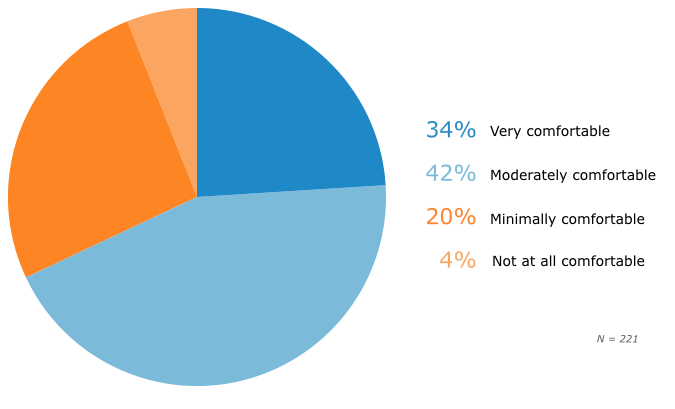
If you do go this route, though, there’s an important point to keep in mind: While charging upfront through your online portal might help reduce cancellations and secure payments, it’s not what the majority of customers prefer.
Guest Preferences for When to Pay for Spa Services
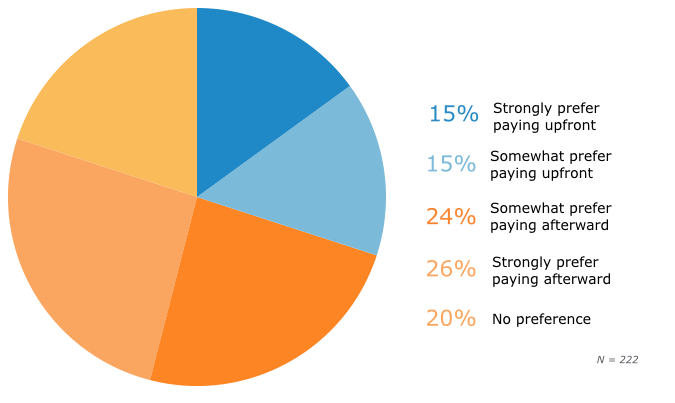
While the 30 percent who would be willing to pay upfront is not a small number, half of the spa guests in our survey prefer to pay after services are provided. As such, it may not be advisable to charge for a spa appointment upfront.
Some creative ways you can leverage this feature of an online payment portal, while keeping your clients happy include:
Charging a small booking fee instead of charging the entire bill. That way, guests are more invested in showing up to the appointment.
Consider making booking charges nonrefundable to further reduce cancellations and insulate your business from the losses caused by last-minute cancellations.
Finally, regardless of how you decide to use your online payment portal, make sure you’re very clear with your guests about any charges.
Next Steps for You and Your Spa Business
Hopefully, you now have a better handle on specific software-related preferences for your spa guests, so what should you do next?
If you don’t have prior experience with spa management and/or booking software, check out our spa software buyer’s guide. It’s full of helpful information and details about important features and capabilities, beyond what’s been discussed here.
Whether or not you’ve got experience with spa software, take the time to read some reviews from your peers about the spa software they’ve used. These reviews offer an excellent snapshot into what’s great—and what might not be so great—about the various systems.